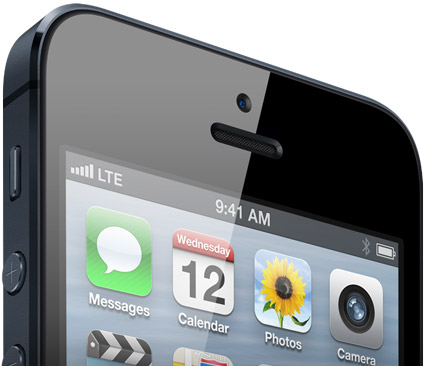
Like baseball, the iPhone 5 has been all about numbers and stats, beginning with the two million pre-orders in 24 hours, 5 million units sold in the first weekend and the rumored $207 it costs to build the 16GB variant of Apple's latest smartphone, the latter of these numbers makes us crave more. Specifically, we want to know what the iPhone 5 is packing to make up that cost.
The answer was provided by the teardown experts at iFixit, which has thoroughly examined the iPhone 5, dismantling it so we don't have to.
The iPhone 5 is a completely different beast from its predecessor, with the most obvious change being the new 4-inch Retina display with a 326 ppi (pixel per inch) density and (1136 x 640) resolution. As you probably already know, the latest iteration has also brought 4G LTE connectivity which speed-wise is a significant departure from the older iPhone 4S. There is a new SoC (system on a chip), bearing the moniker A6, that powers it and holds the key to the impressive benchmark results. And then there's the case, that was brought into attention due to reported scuffing and the alleged response from an Apple official. Oh goody!
According to the teardown, there are indeed issues concerning the build quality of the back cover which as suspected is not exactly scratch-proof and should be dealt with accordingly. The problem with this scenario is that it forces buyers to purchase extra protection to keep the device in tip-top shape, which is less than ideal considering the new iPhone looks great and owners might want to appreciate its beauty on the long term by not masking it with a case.
Of course, mandatory protective casing has been an issue with the iPhone since "Antennagate" in 2010, when Apple offered users free iPhone cases to protect the antenna on the chassis from "death grip" interference, which caused dropped calls.
Body notwithstanding, there is at least one scratchproof element on the iPhone 5 -- the camera lens cover. It is made from sapphire crystal, which has a good hardness rating on Moh's Scale (it is rated as a 9 just behind ruby and diamond.) The irony is that while the lens cover may not scratch, the back cover certainly will, proven in a test with a pair of scissors.
Considering the 4G LTE module, which is Qualcomm-made, is a well-known battery hog, the battery capacity of the iPhone 5 is marginally bigger from its predecessor, with a 5.45Wh rating compared to 5.3Wh for the iPhone 4S. The better browsing and standby times quoted by Apple for the new iPhone and the 4G LTE chip add up to a battery-efficient device.
Obviously the competition between the Apple iPhone 5 and the Samsung Galaxy S III is fierce, and one comparison tool that was recently used were benchmarks. The answer to the impressive benchmark scores comes from the new A6 SoC that is a first for the Cupertino, Calif.-based corporation. It is based off the ARM v7 instruction set, and was custom tailored to Apple's needs and by the looks of it the custom design is working in its favor.
The general consensus from the teardown is that the new iPhone is an impressive bit of kit once the internals are exposed, showcased by the easy access to components and the modular design that allows to replace most of the components with relative ease. iFixit rated it at 7/10 on the repairability scale, which is a welcomed improvement from the MacBook Pro with Retina display that only managed 1/10. Apple managed to deliver better specs inside a smaller package, and that is impressive once all the tiny details are taken into consideration. Downsizing can be interesting.

